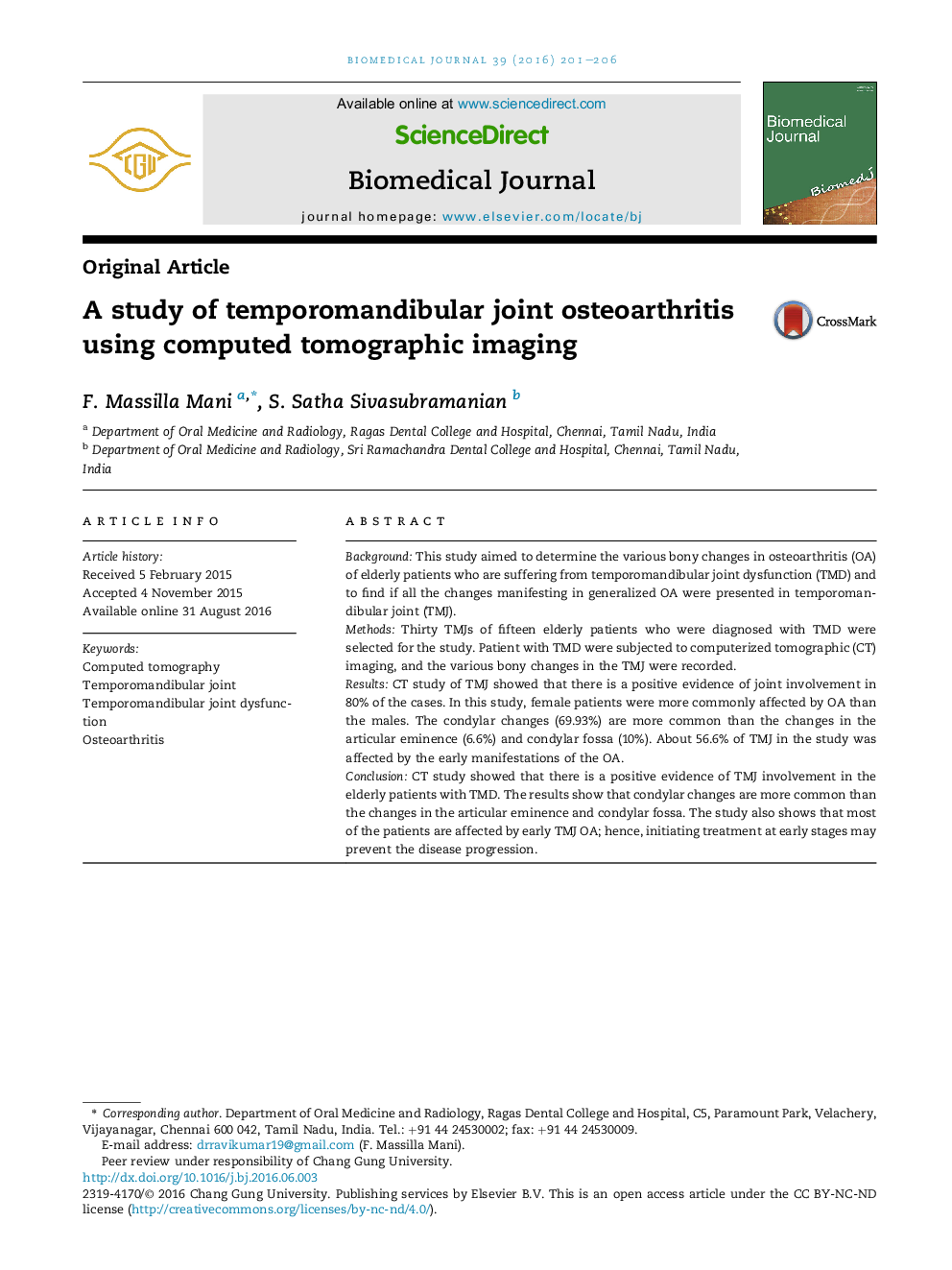| Article ID | Journal | Published Year | Pages | File Type |
|---|---|---|---|---|
| 5524659 | Biomedical Journal | 2016 | 6 Pages |
BackgroundThis study aimed to determine the various bony changes in osteoarthritis (OA) of elderly patients who are suffering from temporomandibular joint dysfunction (TMD) and to find if all the changes manifesting in generalized OA were presented in temporomandibular joint (TMJ).MethodsThirty TMJs of fifteen elderly patients who were diagnosed with TMD were selected for the study. Patient with TMD were subjected to computerized tomographic (CT) imaging, and the various bony changes in the TMJ were recorded.ResultsCT study of TMJ showed that there is a positive evidence of joint involvement in 80% of the cases. In this study, female patients were more commonly affected by OA than the males. The condylar changes (69.93%) are more common than the changes in the articular eminence (6.6%) and condylar fossa (10%). About 56.6% of TMJ in the study was affected by the early manifestations of the OA.ConclusionCT study showed that there is a positive evidence of TMJ involvement in the elderly patients with TMD. The results show that condylar changes are more common than the changes in the articular eminence and condylar fossa. The study also shows that most of the patients are affected by early TMJ OA; hence, initiating treatment at early stages may prevent the disease progression.
